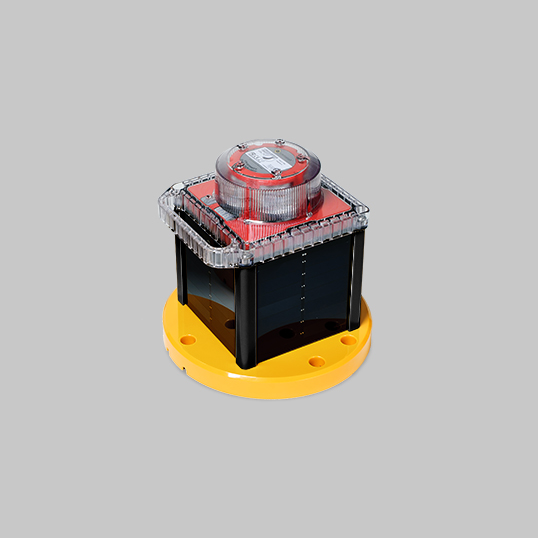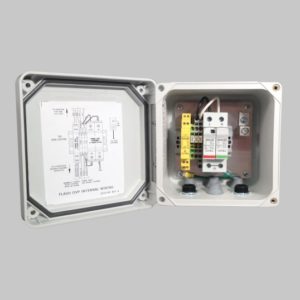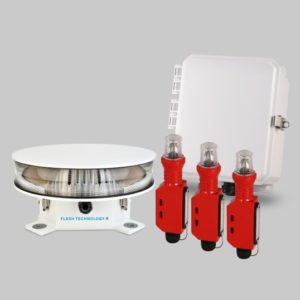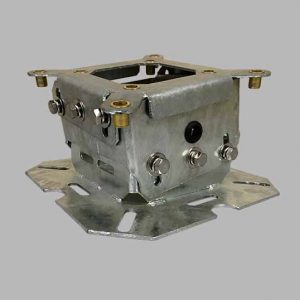The OL800 is a temporary FAA L-810 solar LED obstruction lighting system for temporary installations like MET mast towers and during wind turbine construction. The compact, integrated design is stand-alone, maintenance-free and includes a high-efficiency LED light source, solar panels and battery.
Standard Features
- Patented Energy Management System (EMS) for increased autonomy
- Top-mounted LED user interface with simple tap-to-activate functionality
- Long-life Luxeon Rebel LEDs
- Solar panels on all 4 sides simplify installation and reduce battery charge time
- Replaceable and recyclable batteries to extend product life
- Ships pre-programmed for FAA L-810 applications unless otherwise specified
System Options and Accessories
- Infrared LEDs
- Standard and extended mounting brackets
- Infrared programmer for remote control
- Choice of battery pack sizes to meet desired autonomy
Regulatory Compliance
- FAA L-810 per FAA AC 150/5345-43G
- ICAO Low Intensity types A and B
- Transport Canada CAR 621 CL-810
- Australian CASA low intensity obstacle light
Warranty
- 3-year warranty
- 1-year warranty on battery
| OL800 Compact | OL800 Standard | OL800 Large |
|
|
|
Per section 13.8 of FAA AC 70/7460-1L: a steady-burning red L-810 is required during construction if the permanent flashing L-864 is not in place. If power is not available, structures should be lit with a self-contained, solar-powered, steady burning red LED light meeting the photometric requirements of an FAA L-810.
Per FAA Engineering Brief 76, temporary solar lighting systems must have 7 days of autonomy at 32.5 candela. Autonomy refers to how long the light will last if all solar charging is removed. A light with 7 days of autonomy should shine for 7 consecutive nights if there is no sunlight or charging during those days.










